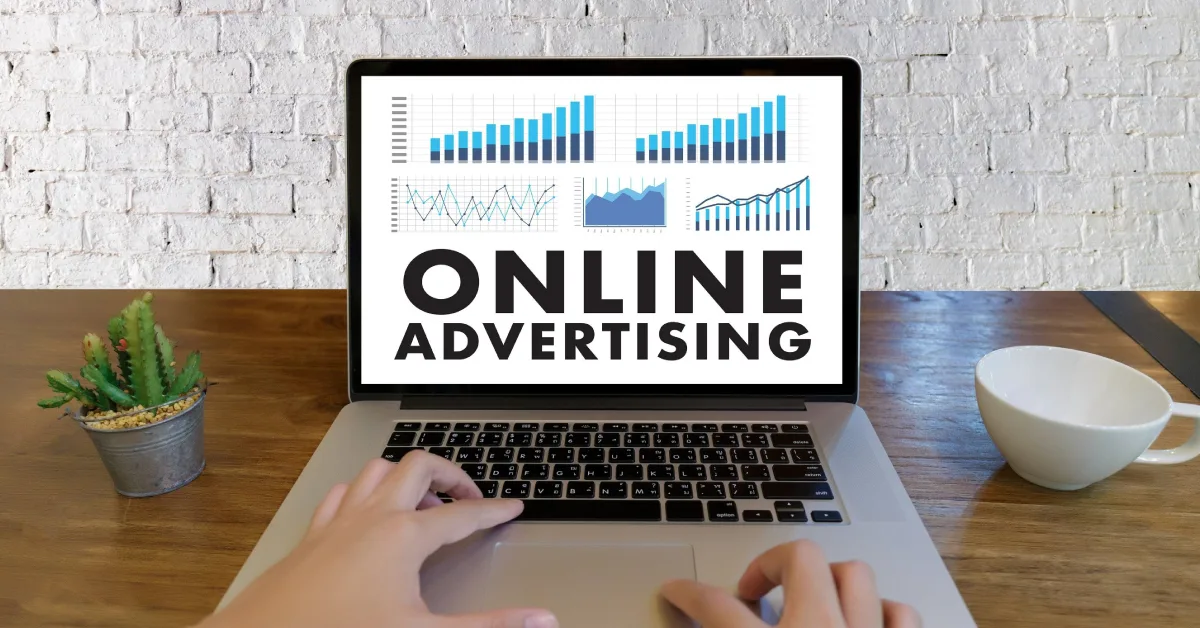Top 8 Tips for Managing Your Online Advertising Campaigns
 September 23, 2024
September 23, 2024Effective management of online advertising campaigns is crucial for any business aiming to maximize its return on investment (ROI). The online advertising world is highly competitive, making it essential to use strategic approaches to get the most out of every ad dollar spent.
This blog covers eight key practices that can help you manage your online ad campaigns more effectively, ensuring better performance and higher returns.
1. Set Clear and Measurable Goals
Establishing clear and measurable goals is essential for the success of your online advertising campaigns. Your goals should align with broader digital marketing objectives and adhere to the SMART criteria—Specific, Measurable, Achievable, Relevant, and Time-bound.
For instance, rather than simply aiming to “increase traffic,” a more precise goal would be to “increase website traffic by 20% within the next three months through targeted ad campaigns.”
Utilizing tools like Google Analytics or specialized PPC management platforms can help track these goals and optimize your campaigns. By setting such well-defined goals, you ensure that your online strategy is focused and effective, leading to better campaign optimization, improved online ad performance, and, ultimately, higher ROI in your advertising management.
2. Know Your Audience Inside Out
Understanding your audience is crucial for the success of any online advertising campaign. Detailed audience research allows you to create targeted ad campaigns that resonate with your audience’s preferences, behaviors, and needs.
This involves not just gathering demographic data like age, gender, and location, but also delving into their online behaviors, purchase history, and even social media interactions.
Tools like audience analysis software can help you segment your audience based on these factors, enabling you to tailor your online strategy more effectively.
Surveys, customer interviews, and competitor analysis are also valuable methods for gaining deeper insights into what drives your audience.
By knowing your audience inside out, you can optimize your ad campaigns for better engagement and higher conversion rates, making your digital marketing efforts more efficient and impactful.
3. Optimise Your Ad Creative and Copy

Optimizing ad creative and copy is crucial for capturing attention and driving engagement in your online advertising campaigns.
Start with attention-grabbing headlines and concise messaging that clearly conveys your unique selling proposition. Tailoring your ad copy to specific audience segments ensures relevance and increases the likelihood of conversions.
Leverage tools like AI to test different ad variations in real-time, allowing you to identify which combinations of copy and visuals resonate best with your audience.
Incorporate high-quality images and vibrant colors to make your ads stand out in crowded digital spaces. Experiment with different ad formats, such as video and interactive elements, to keep your content fresh and engaging.
Regularly testing and iterating on your ad creatives will help you refine your approach, ultimately improving your campaign’s performance and return on investment.
4. Leverage Data for Continuous Improvement
Utilizing data for continuous improvement is essential for optimizing your online advertising campaigns. Begin by setting clear objectives and key performance indicators (KPIs) to measure the effectiveness of your campaigns.
Regularly monitor important metrics such as click-through rates (CTR), conversion rates, and return on ad spend (ROAS). These metrics provide valuable insights into how well your campaigns are performing and highlight areas for improvement.
Implement A/B testing to experiment with different ad elements, such as copy or visuals, and determine what resonates best with your audience. Additionally, use tools like Google Analytics and UTM tracking to gather detailed data on user behavior and campaign performance.
By analyzing this data, you can make informed decisions to adjust bidding strategies, refine ad copy, and optimize landing pages, ultimately enhancing your digital marketing efforts and maximizing ROI.
5. Use Multiple Channels for Better Reach
Adopting a multi-channel approach in your online advertising strategy is vital for maximizing reach and engagement. By utilizing various platforms like social media, email, PPC ads, and more, you can interact with your audience where they are most active. This method allows you to deliver consistent messaging across different channels, which helps build brand recognition and trust.
A well-coordinated multi-channel strategy not only expands your audience but also improves customer loyalty by providing a seamless experience across all touchpoints.
With each channel offering unique ways to engage, this approach ensures that your digital marketing efforts are more efficient, ultimately leading to higher ROI and better overall performance in your advertising campaigns.
6. Manage Your Budget Wisely

Effectively managing your advertising budget is crucial for maximizing ROI in your online campaigns. Start by setting clear and specific advertising goals that align with your overall digital marketing strategy. This helps in allocating your budget more efficiently across various channels, ensuring that funds are directed toward the most impactful campaigns.
Regularly monitor your expenses and adjust your budget based on performance data. Utilize tools like budget templates and marketing automation software to track spending in real-time and prevent overspending. Implement strategies like the 70-20-10 rule, where 70% of your budget goes to proven tactics, 20% to new approaches, and 10% to experimental methods.
By continuously optimizing and reallocating resources to high-performing channels, you can improve the efficiency of your advertising management and achieve better online ad performance.
7. Monitor and Respond to Trends
Staying on top of the latest trends in online advertising is essential for maintaining a competitive edge. By regularly monitoring industry shifts, you can adapt your strategies to meet evolving consumer behaviors and preferences. Utilizing tools like Google Trends or social listening platforms helps you identify emerging topics relevant to your audience.
Responding quickly to these trends allows you to position your brand as a leader in your niche, which can increase engagement and drive conversions. Additionally, trend monitoring helps you refine your online strategy, ensuring that your campaigns remain effective and resonate with your target audience.
In a fast-paced digital landscape, being proactive in adjusting your advertising management based on current trends is key to optimizing online ad performance and maximizing ROI.
8. Regularly Review and Adjust Campaigns
To ensure your online advertising campaigns are always performing at their best, it’s crucial to regularly review and adjust them based on data-driven insights. Start by setting measurable goals and key performance indicators (KPIs) to track your campaign’s success. Use analytics tools to monitor key metrics such as impressions, click-through rates (CTR), conversion rates, and return on ad spend (ROAS).
Frequent A/B testing of ad creatives, targeting strategies, and bidding options will help you identify what works best for your audience. Adjust your bids and targeting as needed to optimize performance.
By continuously iterating and refining your campaigns, you can maximize their impact, improve ROI, and stay competitive in the ever-evolving digital marketing landscape.
Conclusion

A strong conclusion is essential for reinforcing the key points of your online advertising campaigns and leaving a lasting impression on your audience. Summarizing the main takeaways helps to solidify your message and ensures that your audience understands the importance of applying the best practices discussed.
Additionally, incorporating a call to action can motivate your readers to take the next step, whether it’s adjusting their advertising strategy or reaching out for professional assistance.
A well-crafted conclusion not only ties together the content of your blog but also encourages continued engagement, making it a critical component of effective digital marketing content. By mastering this final piece, you can significantly enhance the impact of your advertising management efforts. If you want to enhance your online presence, Content Whale’s expert content creation and advertising strategies can help you achieve your goals and stand out in a competitive market.
What are the most important metrics to track in online advertising campaigns?
Tracking key performance metrics is crucial for measuring the success of your online ad campaigns. Important metrics include Click-Through Rate (CTR), which measures how effectively your ads capture attention, and Conversion Rate, which tracks the percentage of users who complete a desired action after clicking on your ad.
Cost Per Acquisition (CPA) helps you understand how much you spend to acquire each customer, while Return on Ad Spend (ROAS) indicates the revenue generated for every dollar spent on advertising.
How often should I review my online advertising campaigns?
Regular review of your ad campaigns is necessary to ensure they are performing optimally. It’s recommended to review key metrics daily, especially during the initial phase of your campaign. Weekly or bi-weekly in-depth analyses help identify trends and make necessary adjustments. Regular A/B testing of ad creatives and targeting strategies is also essential for continuous improvement.
What tools can help in managing online ad budgets effectively?
Tools like Google Ads Budget Reports, Facebook Ads Manager, and third-party platforms provide detailed insights into your spending, helping you manage and optimize your ad budget effectively. These tools allow you to track spending in real-time, set automated rules for budget adjustments, and optimize your bids based on performance.
How can I ensure my ad creative stands out in a crowded market?
To make your ad creative stand out, focus on relevance and engagement. Use targeted ad groups, compelling visuals, and persuasive language that resonates with your audience.
Regularly test different ad versions (A/B testing) to determine which creative elements perform best. Additionally, aligning your ads with specific keywords and using high-quality landing pages can significantly enhance engagement and conversion rates.

